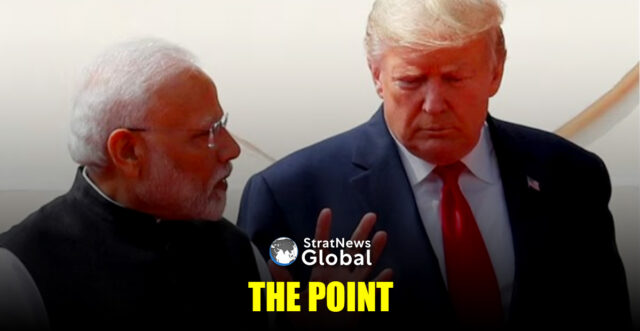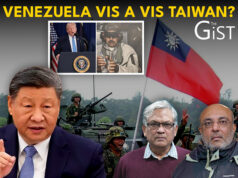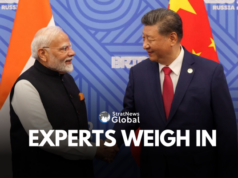Washington’s relationship with New Delhi has always been one of high hopes and harsh realities.
Every decade or so, the United States rediscovers India, dazzled by its scale, seduced by its democratic credentials, and desperate for a counterweight to China. Yet time and again, the relationship stumbles on the rocks of mistrust, mismatched expectations, and India’s fiercely guarded autonomy. Today, with trade disputes, India’s oil deals with Moscow, and public spats over Pakistan souring ties, the pattern looks set to repeat itself.
Into this fraught context step Kurt M. Campbell and Jake Sullivan, writing in Foreign Affairs. Their essay, The Case for a U.S. Alliance With India, makes the case that the United States must move beyond episodic partnership and formalise a new strategic alliance.
Both men bring weighty credentials to the table—Campbell as a veteran of Indo-Pacific strategy, Sullivan as a former National Security Adviser. Their proposal is ambitious: an alliance built not on the old Article 5–style security guarantee but on five pillars—technology, economics, defence, intelligence, and global problem-solving.
On paper, it looks like a master plan. Build a shared tech ecosystem spanning AI, quantum computing, and biotech. Strike supply chain agreements to reduce dependence on China. Co-develop defence systems rather than just transfer American hardware. Expand intelligence-sharing across the Indian Ocean. Launch joint projects on climate, food security, and global health. The blueprint is sweeping, the aspirations noble. If only geopolitics worked like a PowerPoint presentation.
The central flaw in the Campbell-Sullivan argument is not their vision but their optimism. India is not waiting for Washington to offer a grand alliance. It wants technology transfers, market access, and global stature—but without surrendering its cherished “strategic autonomy”. That is not a tactical posture but a deeply embedded worldview, born of colonial humiliation and hardened by decades of Non-Aligned Movement rhetoric. No treaty, however carefully designed, will persuade New Delhi to align itself fully with the United States.
The authors acknowledge some of these roadblocks—India’s democratic backsliding, its reliance on Russian defence and energy, its allergy to alliances—but they seem to believe that pragmatic leadership can overcome them. This borders on wishful thinking. Narendra Modi’s government has shown again and again that it will hedge ruthlessly between Washington, Moscow, and Beijing, extracting concessions from all sides while aligning with none. His smiling photo-op with Xi Jinping and Vladimir Putin over the weekend should serve as a blunt reminder that India is not about to pick sides.
Then there is the American side of the equation. The authors glide past the elephant in the room: the United States itself is an unreliable ally. Under Donald Trump, U.S. diplomacy is often erratic, swinging from theatrical threats to transactional dealmaking. Even under previous administrations, bipartisan goodwill toward India has been undermined by bureaucratic inertia and domestic politics.
If NATO, the U.S.-Japan alliance, and even South Korea’s security pact have been destabilised by American political cycles, what chance does a still-fragile “alliance” with India have of weathering future storms?
Strip away the rhetoric, and what Campbell and Sullivan are proposing is less an alliance than an illusion. India will not abandon its defence ties with Russia overnight, nor will it serve as Washington’s frontline bulwark against China. For New Delhi, alignment with the U.S. is a means to an end: access to cutting-edge technologies, investments, and a louder voice on the world stage. For Washington, India is useful so long as it helps contain Beijing’s rise. These are convergences of convenience, not commitments of trust.
None of this is to say the relationship lacks value. Quite the opposite: transactional cooperation on defence technology, intelligence, and supply chain resilience is both possible and desirable. But the danger lies in overselling it. By dressing up pragmatic coordination as a “strategic alliance”, Washington risks inflating expectations and setting the stage for disappointment. That is precisely the cycle the relationship has endured for decades: bold promises, unmet expectations, and bitter recriminations.
The sober truth is this: the U.S.-India partnership will remain what it has always been—turbulent, tactical, and transactional. It will lurch forward when interests align, stall when they diverge, and survive not because of mutual trust but because both sides need each other just enough to keep talking. To imagine it as a 21st-century NATO is to mistake fantasy for reality.
Campbell and Sullivan are right about one thing: the only thing harder than building a U.S.-India alliance is not having one. But the harder truth is that the relationship will never be an alliance in the way Washington imagines it. It will be a balancing act—messy, uneven, but still indispensable.
Recognising that may be less glamorous than drafting grand treaties. But it is also more honest.
In a career spanning three decades and counting, Ramananda (Ram to his friends) has been the foreign editor of The Telegraph, Outlook Magazine and the New Indian Express. He helped set up rediff.com’s editorial operations in San Jose and New York, helmed sify.com, and was the founder editor of India.com.
His work has featured in national and international publications like the Al Jazeera Centre for Studies, Global Times and Ashahi Shimbun. But his one constant over all these years, he says, has been the attempt to understand rising India’s place in the world.
He can rustle up a mean salad, his oil-less pepper chicken is to die for, and all it takes is some beer and rhythm and blues to rock his soul.
Talk to him about foreign and strategic affairs, media, South Asia, China, and of course India.





